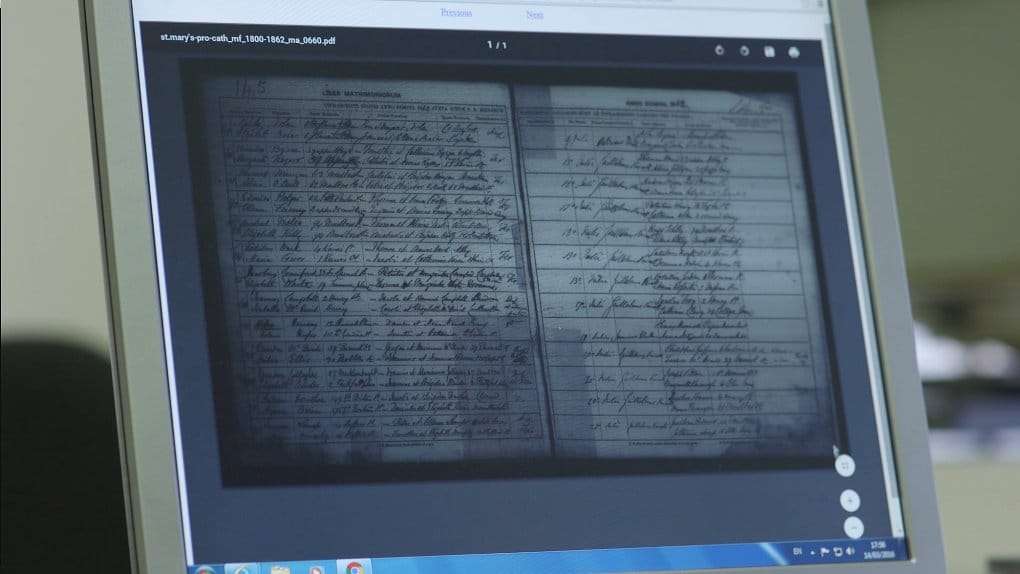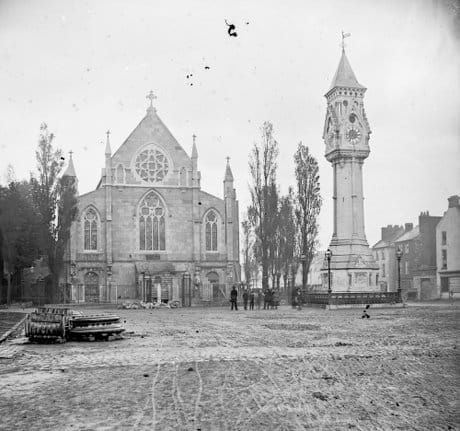
Church Records
Before the start of civil registration for all in 1864, local church records are often the only direct records of family events, and so the only direct sources for family history. For this reason the starting dates of the local registers are very often as far back as Irish research can go.
Catholic and Anglican dioceses and parishes
When the Reformation was introduced into Ireland in the sixteenth century, the parish structures of the Roman Catholic Church and the Anglican Church of Ireland began to diverge. The Church of Ireland became the state Church, retained the old, medieval parishes and became in effect an arm of government.
The Roman Catholic Church, on the other hand, was weakened by the confiscation of its assets and the restrictions on its clergy, and so had to create larger and less convenient parishes. Eventually, this weakness allowed more flexibility. Catholic parishes could respond to new population centres and, in the nineteenth century, could adapt to reflect population change, splitting or shrinking as the size of its flock dictated.
The differences in the parish structures of the two churches are reflected in their records. Even allowing for the fact that members of the Church of Ireland were almost always a minority of the total population, the records of each parish are much less numerous than Roman Catholic records, covering a more restricted area, and so are relatively easy to search in detail. Catholic records, by contrast, cover the majority of the population and much larger geographical areas, and as a result can be very time-consuming to search in detail by hand.
The creation of new Catholic parishes in the nineteenth century can also mean that the registers relevant to a particular area may be split between two parishes.
Both Roman Catholic and Church of Ireland parishes are organised into dioceses, on a plan first laid out in the Synod of Kells in the Middle Ages. Their dioceses remain almost identical, although the Catholic system has amalgamated some of the smaller medieval dioceses.

